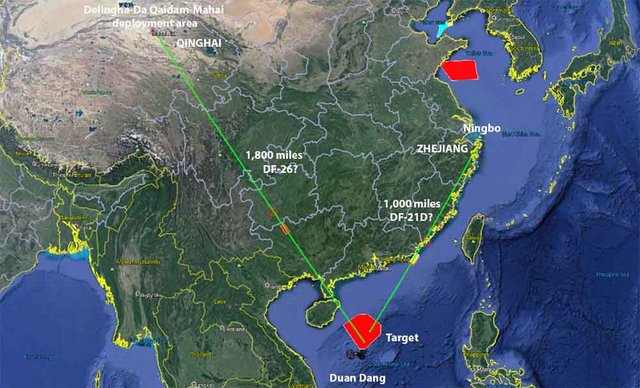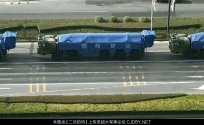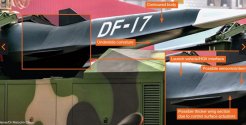A minority of these Chinese missiles are equipped with MaRVs (maneuverable reentry vehicle) and none yet with HGV (hypersonic glider vehicle). That is, most have very poor accuracy, which removes much of its real value. That is changing, but it turns out that at present the Chinese cannot get the best out of their ASBM devices.
As for the satellite constellation, Hendrick responded to my comment by stating about the use of Yaogan-30 for the designation of a moving target as a CVN, and the task was only completed last year. And the previous years? Didn't I have the ability to track a ship in the South China Sea?
I'm curious to learn how you speculate that
"A minority of these Chinese missiles are equipped with MaRVs (maneuverable reentry vehicle) and none yet with HGV (hypersonic glider vehicle). That is, most have very poor accuracy, which removes much of its real value. That is changing, but it turns out that at present the Chinese cannot get the best out of their ASBM devices."
What MaRVs do China have but apparently according to you are not HGV based? I only mentioned some ways of making MaRV that are aerodynamically simple but difficult to implement guidance. How do you know that no missile is equipped with HGV when even back in 2019 it was revealed to the total public (not even leaked) that China has deployed at least one HGV on a SR/MRBM capable missile.
How could China have been developing and testing AShBM which require at least rudimentary MaRV more than 10 years ago? So how do you know China still more than 10 years later, cannot get the "best" out of their AShBM?
You have no answers for any of the above because you pulled this out of your arse. The facts show that China has several HGVs (even a Chinese university did their own HGV test years ago). The Chinese even showed the world a HGV... probably their oldest and least impressive HGV and certainly the least sensitive and secretive. That vehicle being shown even though seemingly deployed on SR and MR boosters, the HGV itself has quite some glide range. China reported itself that it's made many breakthroughs in combined cycled engines and next generation sodramjets for higher Mach. Chinese scramjets are old news.
China's been testing AShBM for about a decade and developing it for much longer. That involves at least having pretty good MaRV (CEP needs to be <20m) even 10 years ago. You can't design a system when you don't even have the main component.
So again what makes you say the already obviously false "China hasn't deployed a HGV" when they themselves admit to deploying at least one and the tests hint at many more and many years up to a decade of having had MaRV accurate enough for the purposes of hitting a moving carrier.
"As for the satellite constellation, Hendrick responded to my comment by stating about the use of Yaogan-30 for the designation of a moving target as a CVN, and the task was only completed last year. And the previous years? Didn't I have the ability to track a ship in the South China Sea?"
China had the ability to track planes moving at speed for years and years before Yaogan constellation was completed. How do you explain that? Chinese leaks have been talking about satellites being able to track stealth fighters for years and years and years. You also do realise that Yaogan series is the latest and greatest right? But that doesn't mean the previous equivalent role satellites weren't capable enough. In any case, satellites don't need completed full constellations to perform their tasks. Full constellations only provide better accuracy and more backups plus improvements between first launched and last. GPS doesn't completely fail once you take out one in the constellation. Similarly, maybe a small few numbers of Yaogan was already enough to provide <10m CEP and certainly enough to provide targeting.
Satellites is probably also not the only guidance and targeting component. We know that Soar Dragon has pretty much been revealed as high altitude detection, tracking, guidance component for things like AShBM and I'm sure many others. The problem is they are slow and within reach of SM-3 or even shorter ranged missiles despite their high altitude and relatively low RCS. This is why they revealed the WZ-8, a high supersonic, near space, smaller, stealth targeting drone.
Apparently it was also revealed during the most recent AShBM test that the missiles themselves drop some guidance/communication device at some point of its trajectory, presumably to get around the ionised frontal arc of the re-entry vehicle. But this could also potentially be achieved via satellites.



